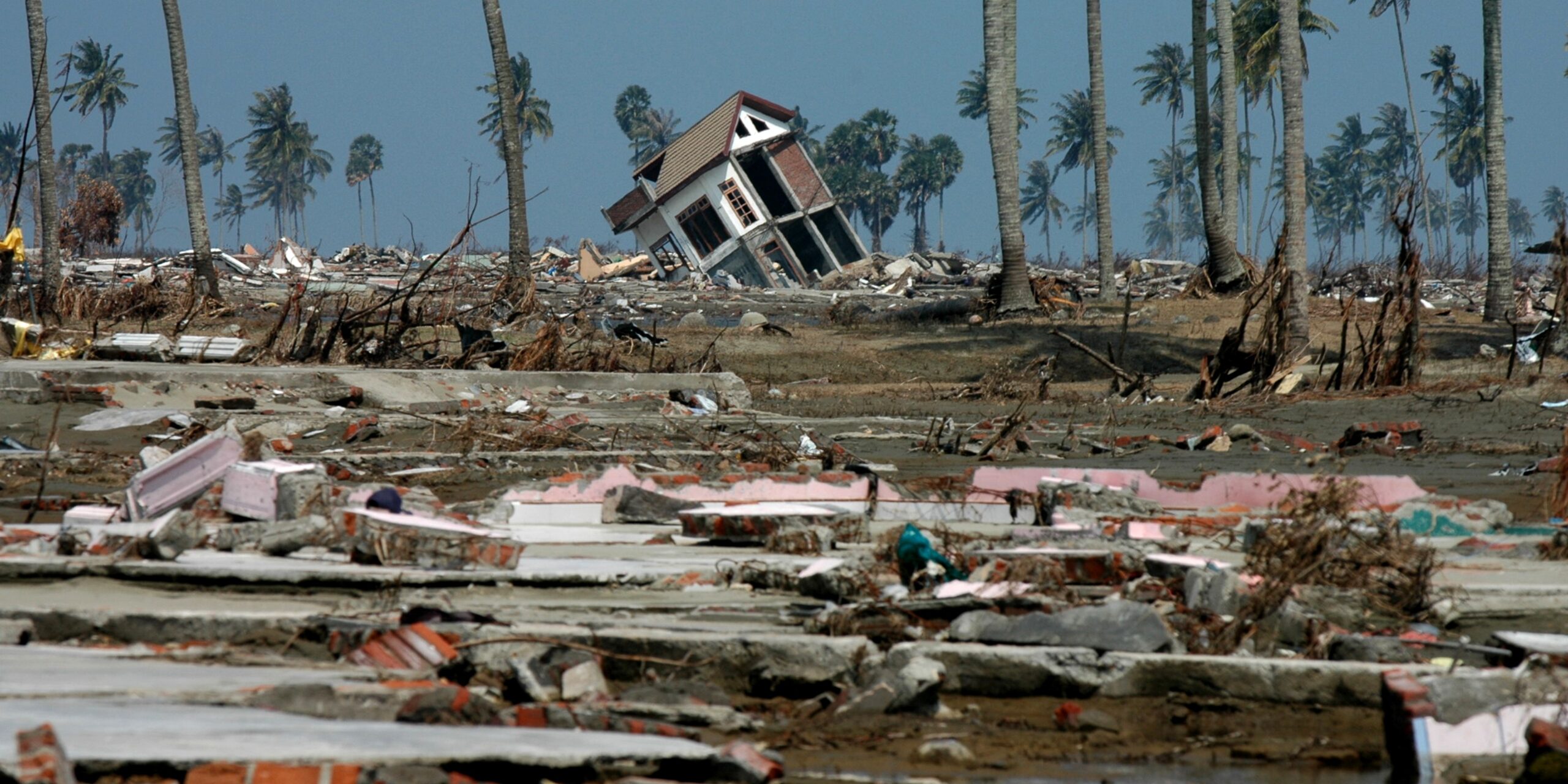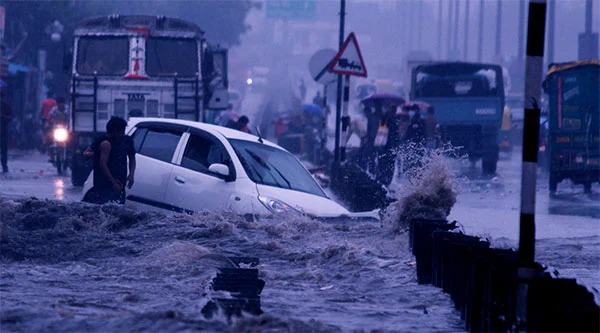Since 1980, the U.S. has had about 403 weather and climate disasters, each with damages reaching or exceeding $1 billion—totaling almost $2.91 trillion in overall costs, according to the U.S. National Oceanic and Atmospheric Administration (NOAA). The agency’s January data shows there were 27 climate disasters with losses over $1 billion each, in the U.S. in 2024.
While the cost data isn’t tracked equally in all countries, what the U.S. has experienced is an indication of the economic cost climate hazards can cause worldwide. This is one of the reasons why severe weather continues to be among the top concerns for C-suite executives. Yet, fewer than 1 in 5 business leaders have invested in strategies to better protect employees from climate-related health risks, according to the National Commission on Climate and Workforce Health.
Regardless of one’s political or social position on global warming, or the ultimate cause of climate change, there is no disputing that extreme weather creates a wide range of dangers and disruptions for organizations—from disrupted supply chains to rising insurance costs and labor challenges.
In this blog post, we explore five major climate risks all business leaders need to be aware and stay ahead of, as well as recommendations on how to prepare and respond to those risks.
Weather Risk No. 1: Extreme temperatures
2024 was the hottest year on record, breaking the previous record set in 2023. In particular, Asia, Africa and Europe experienced the hottest July on record. This extreme heat helped fuel other severe weather events around the globe, including wildfires, floods and droughts.
Not only does the intense heat endanger public health and safety, it also impacts business operations, including workforce disruptions and damages to facilities, particularly if a company’s production involves outdoor labor.
Most infrastructure is built to endure a range of temperatures considered normal for the region in which it resides. But regions’ expected temperature norms are changing dramatically and quickly. From an operational cost point of view, extreme temperatures are driving up production, refrigeration and overall energy costs across a wide range of industries.
Weather Risk No. 2: Wildfires
Exacerbated by extreme heat, devastating wildfires have been a recurring theme over the past few years. In the U.S., fires across Los Angeles that started on January 7 have killed more than 20 people and destroyed over 12,000 structures. About 88,000 people remain under evacuation orders and another 84,800 people are under evacuation warnings.
In Europe, Greece battled massive fires—as it also did in 2023—in the summer of 2024. Countries and areas in South America, including Venezuela, Bolivia, the Amazon and the Brazilian Pantanal, the world’s largest tropical wetland, suffered from wildfires that destroyed thousands of square miles in the same year.
According to the United Nations, uncontrollable wildfires are projected to increase globally by 14 percent by 2030, 30 percent by 2050 and 50 percent by the end of the century. They can damage and/or significantly disrupt critical public infrastructure, such as transportation and water management facilities, as well as businesses operations. Rolling blackouts—meant to prevent more fires—can also impact major technology centers that supply the automotive, engineering and manufacturing industries.
In addition, high levels of fine, noxious particles in the air can inflict serious health issues on employees who work outdoors, live in or near affected areas, or commute to and from the office. In fact, inhaling wildfire smoke contributes to an average 12,000 early deaths a year in South America, according to a 2023 study.
Weather Risk No. 3: Hurricanes, cyclones and typhoons
The NOAA found that in the U.S., the 2024 Atlantic hurricane season—with 18 named storms—is the fourth-costliest on record. In particular, Hurricane Helene struck the U.S. Florida Gulf Coast in September 2024, killing more than 200 people and causing $79.6 billion in economic damage. It was the deadliest Atlantic hurricane since Maria (2017), and the deadliest to strike the U.S. mainland since Katrina (2005).
Other 2024 catastrophic events include:
- December: Cyclone Chido killed more than 90 people and destroyed over 35,000 homes in Mozambique. It also devastated the French archipelago of Mayotte, flattening neighborhoods and critical infrastructure.
- September: Super Typhoon Yagi hit Southeast Asia and caused significant casualties in several countries. Vietnam saw the highest death toll of over 300 and suffered severe damage to houses, critical infrastructure and factories.
- July: Hurricane Beryl caused nearly 46 deaths in Texas, U.S.
- May: Cyclone Remal tore through India and Bangladesh, killing at least 65 people and damaging hundreds of thousands of homes in both countries
Unlike some extreme weather events, hurricanes, cyclones and typhoons usually come with several warnings, giving organizations the advance notice they need to prepare.
But the cascading effects of these events are not as easy to keep abreast of.
Organizations need to know about such disruptions as soon as they occur to keep their employees and customers safe and ensure business continuity. For example, during Hurricane Helene, a major big box retailer relied on Dataminr’s real-time information to stay informed about damage to its facilities during power outages. This helped the organization track infrastructure issues affecting store access and deliveries, while guiding store leadership on safely returning onsite.
Hurricanes also come with a heavy price tag, and real-time information on potential damages and associated risks is critical. In the U.S., hurricanes Katrina (2005), Harvey (2017) and Ian (2022) cost approximately $176.3 billion, $136.3 billion and $112 billion in damages respectively.
Businesses often suffer direct expenses, such as the cost of renovating damaged property and equipment, as well as indirect expenses from lost revenue—and increased costs due to the shortages that often follow. But the overall impacts can be long-lasting and difficult to assess as the recovery process often takes years, even decades.
Weather Risk No. 4: Floods and storms
One of the immediate effects of hurricanes is flooding. However, even without a hurricane, prolonged and heavy rainfall, as well as slow-moving thunderstorms, can lead to floods. Rising global temperatures also mean more rain, making flooding more likely and intense.
In 2024, we saw a series of deadly floods and storms worldwide. One example is Valencia, Spain, which had 230 deaths and destruction of numerous homes and businesses in the country’s October floods.
As one of the major climate risks to businesses, catastrophic flooding can destroy physical assets and infrastructure. This includes inventory damage, transportation disruptions, revenue loss, and power surges. At the same time, employees, as well as coastal and river communities, are at risk.
One of the first considerations business leaders need to take to prepare for flooding is to recognize whether their building’s elevation levels are above flood risk zones. Additional considerations include employees’ home locations and whether or not business continuity plans should operate remotely or from another facility if and when flooding were to occur.
Download Now: Dataminr Risk Management Playbook on Flooding Events
Weather Risk No. 5: Winter Storms
Winter storms can pose an even greater risk to organizations than the four weather risks touched on above. This is because, typically, winter storms are not predicted with the same certainty or specificity of extreme heat or even flooding.
They often occur after a combination of changes in the jet stream, which plunges cold air masses further into North America and Central Europe. At the same time, precipitation and clashes between air masses can create winter “superstorms” that can be just as damaging as a hurricane, typhoon or cyclone.
These storms also have the potential to impact a much larger geographical area than hurricanes or floods because their extreme cold air masses can cover an entire continent for days or even weeks. The results are a loss of business, transportation and power outages as well as changes in consumer behaviors and employees’ ability to react—compounding the need for real-time information.
Gearing up for these winter events can take on similar, but also new, dimensions in terms of preparations and business continuity. Given the potential for air, road, and even rail travel to be disrupted for days after a major snow storm, organizations need to consider how they can manage their supply chain and keep operations running smoothly.
Assess your organization’s risk to severe weather events
All five of these extreme weather and geological phenomena have occurred in 2024. Therefore, it’s imperative that businesses accelerate their climate risk assessment, mitigation, and adaptation strategies.
First, make sure you understand what your organization’s exposure is, be it to wildfires or hurricanes. Then, assess your organization’s ability to monitor and respond. During your assessment, be sure to ask yourself the following questions:
- Are my facilities or business travel destinations located in an area prone to severe weather?
- What is the criticality of operations at sites that are vulnerable?
- Are the elevation levels of our buildings above flood risk zones?
- Do any of our facilities rely on national grid power and power supplies?
- Do any of our buildings have shelters inside of them? Are there any shelters available in the local community?
- Do our locations have the needed resources on hand, such as emergency kits, fresh bottled water, additional fuel, and backup generators?
- Is the landscaping around our facilities storm resistant?
- Do we have the real-time information needed to stay ahead of and respond to the risks and impacts of extreme weather? And does that information include credible, authoritative data sources such as the U.S. National Weather Service and the World Meteorological Organization?
- Do we have clearly defined preemptive measures in place, including severe weather practice drills and emergency action plans that include how to account for employees and how and who will be responsible for communications?
This blog has been updated from the original, published on October 27, 2021, to reflect new events, conditions or research.

Dataminr Pulse for Corporate Security
See how organizations like yours can use Dataminr Pulse for Corporate Security to better detect, prepare for and respond to extreme weather events so you can protect your people and assets.
Learn More




